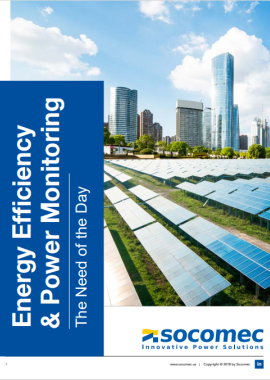LEED (or the Leadership in Energy and Environmental Design) certification is a globally recognized symbol of sustainability achievement, and is touted as the gold standard for green building recognition. When your building is pursuing LEED certification, it’s important to have an energy monitoring strategy from the schematic design phase of your project. The U.S. Green Building Council encourages a whole building approach to energy conservation. Local codes are the baseline for credits as well. Since no two buildings are alike, this allows flexibility in design and approach. But the common denominator for all is a method of monitoring energy.
New Construction Energy Monitoring
New buildings have the opportunity to design with energy conserving strategies in mind. They can implement everything from renewable energy sources to energy-saving equipment to reduce energy consumption. Energy monitoring devices can then be installed to measure energy consumption on individual pieces of equipment. Installing metering devices helps you to measure your energy consumption, which will allow you to document performance improvement with the energy performance metering path. This path is part of the alternative compliance path to meet LEED energy credit prerequisites for Minimum Energy Performance and Optimized Energy Performance. As part of this compliance path, metering is required on each energy source, including any renewable energy source. Appropriate metering devices that can provide easy and accurate readings of individual equipment, such as lighting or HVAC systems, are essential to meeting the credit requirement. If the metering requirement is met along with occupancy requirement, a total of 18 points can be achieved towards a particular LEED rating.
Advanced Energy Metering
Along with the Energy Performance Metering Path credit, buildings can also pursue the Advanced Energy Metering credit that can find other opportunities for energy savings by tracking building and system level energy use. Eligible advanced metering systems include those that track whole building energy systems or energy end systems that account for 10% or more of yearly consumption. Advanced metering devices are required to meet this credit because they must have the capability to be read remotely and connected to an Energy Management System. Meters for electrical systems must record demand as well as consumption in intervals of an hour or less. If advanced metering devices are installed permanently on equipment to meet the Energy Performance Metering path, this additional credit can be attained simply by integrating the metering devices to a remote EMS to track and record energy consumption.
Energy Monitoring and LEED certification for existing buildings
It may seem that only new construction can gain energy credits towards LEED accreditation, but existing buildings can also pursue credits for improved energy efficiency. A benchmark is established from existing usage then calculated for how much it should improve to be LEED certified. Using the Environmental Protection Agency benchmarking tool a renovation project can be compared to other existing buildings. The benchmarking tool uses calculators to verify building energy usage to use for comparison. Most existing buildings pursuing LEED accreditation have Energy Management Systems (EMS) as part of their energy management strategy. By providing this system of controls, they are able to view and track all energy consuming equipment in a building. With metering devices, they can track individual usage, which then can be reported to the EMS and used to provide data to facility managers for energy consumption follow-up and ongoing maintenance. Once a renovation project has achieved LEED accreditation at a certain energy standard, facility managers can use this to maintain and to reduce energy consumption which is reported in real time from metering.
How Energy Monitoring Systems Aid in LEED Certification
Obtaining LEED accreditation is the goal of many organizations in the industry. Financial incentives are motivation, but many want to build green buildings from a sense of environmental responsibility. Energy conservation is at the heart of the green building movement and therefore a major focus of becoming LEED certified. Energy metering, therefore, plays a major role in tracking, maintaining, and providing data to reduce energy consumption so that it can be quantified to create baseline measurements to control and reduce building energy consumption. Through metering, buildings can provide LEED with accurate real-time readings from each device, and maximize credit potential. Metering can also help facility managers maintain the energy consumption cap as designed, which allows them to maintain and even reduce energy consumption when continued commissioning is done as the building ages. Obtaining a LEED certification is a major achievement for a building, demonstrating a commitment to ongoing energy conservation and environmental stewardship. Using metering devices and systems can help obtain certification, but more importantly, help a building maintain and reduce energy consumption in a continuous process for the life of a building.
Are you looking to learn more about how energy monitoring systems can help you save on energy costs? Download our free white paper, Energy Efficiency & Power Monitoring: The Need of the Day.







